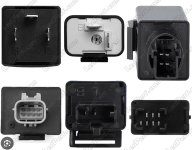wantsabike
Well-known member
So I’ve bought some LED blinkers for my bike, completely forgot about needing something for the hyper flash. I understand the whole concept of it and all but one thing I’m unclear of is do I need a resistor ? Or a blinker led relay ? And do I need one per blinker or will one run all four blinkers ?


















